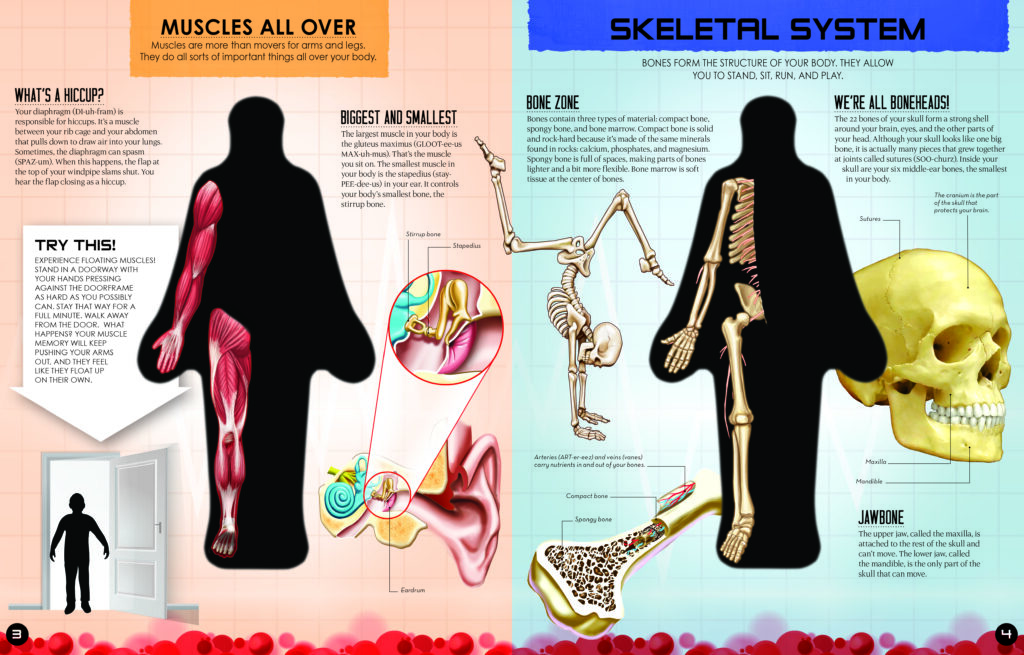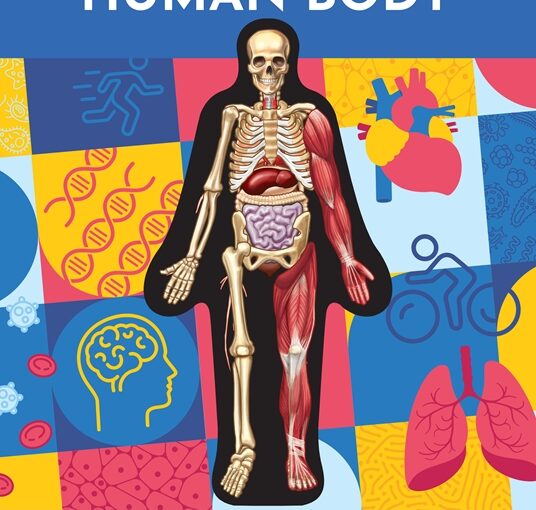As a teacher, I love questions and curiosity. I’m also convinced that had I been exposed to more medical or STEM activities as a kid I would’ve ended up in one of those ancillary fields. As an adult, I’m also curious about the different systems that make up my body so that I can live longer. Inside Out Human Body, is a STEM book that feeds the upper elementary and middle school minds that are curious, while making those who might be disgusted aware of the processes that keep up moving.
Yeah, I was one of those primary school students who thought it was funny to make light of the things within our bodies. Granted, many students think that way, but it’s the demystification of those subjects that’s able to get kids past it. When you take away the power of the taboo or ‘funny’ material, the joke is on you for being base enough to comment on it.
When kids look at Inside Out Human Body the thing that will immediately get their attention is the see-through skeleton on the cover. They’ll be able to see lots of bones that make us up, as well as, key components of the Muscular and Digestive Systems. We have skeleton muscles that work closely with our bones and smooth muscles that work with body functions like breathing. As you turn each page elements of the system in question will be removed from our bony friend.
There are also small paragraph blurbs on interesting bits of information. This is the presentation that Nat Geo Kids does so well. In Human Body the snippets are shorter, consisting of five sentences at the longest. They’re also cleverly titled, like The Long and Winding Road, when it’s talking about the Digestive System. This is also a great time to teach your kids about the brilliance of The Beatles and why they were so revolutionary. The Scoop on Poop and We’re All Boneheads! are other examples of the book using wit and brevity to grab the reader’s attention.

However, the body is complicated and every system can’t be seen from the book’s cover. After you read about what happens with the food we eat you’ve turned enough pages to see the rest of the body. The Circulatory, Urinary, Nervous and Respiratory Systems take center stage in the second half of the book. The see-through skeleton is now able to showcase the heart, kidneys, and lungs. Kids will see where they’re located within us, as well as, their scale to the rest of the organs.
The Nervous System might seem to get the short end of the stick in the book. It’s the final page of the book, but the nerves simply hook up the brain and make us feel. In reality, that’s an amazingly complex thing that really could’ve merited an entire book by itself. That is a different book, a separate topic, and one that would not have translated as well to ages eight and up.
Inside Out Human Body is a reference book with some leisure reading possibilities. It won’t work for every kid. Some kids need to see a complex thing like the human body in a package like this. It makes it fun, and less complex, it’ll answer some questions that they’ve had but never asked, and lead them to think about new things regarding our anatomy. This is soft learning about a subject that kids think is very hard, but the more they’re exposed to it the easier it gets.
Inside Out Human Body is available on Chartwell Books, an imprint of Quarto Publishing Group.
There are affiliate links in this post.






 Facebook
Facebook Twitter
Twitter Flickr
Flickr GooglePlus
GooglePlus Youtube
Youtube